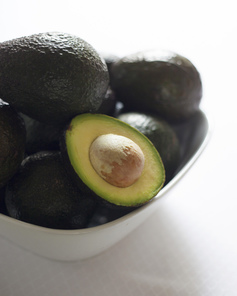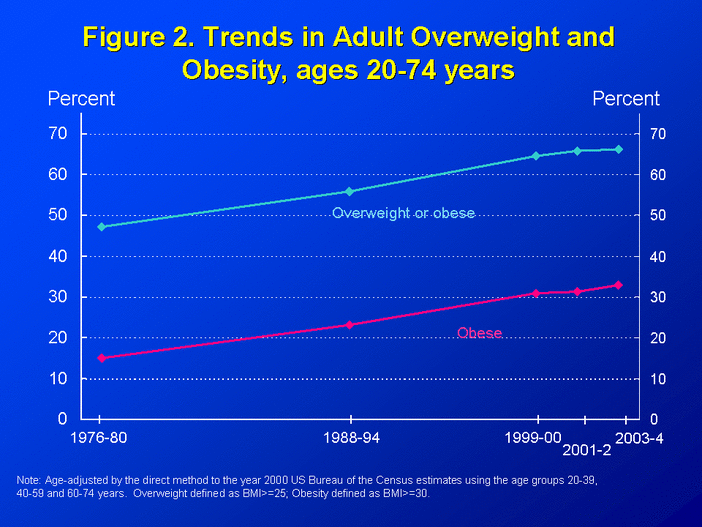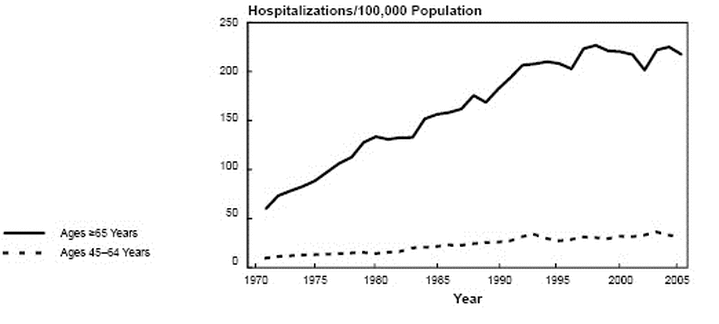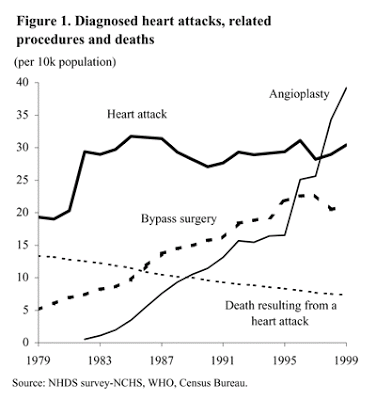 Avocados are rich in healthy monounsaturated fat Avocados are rich in healthy monounsaturated fat This is likely to be the most controversial step I am recommending. For the past 30-plus years we have been hearing about the evils of dietary fat in general and of saturated fat in particular. This led to the "low-fat" food craze and a constant barrage of "healthy" low-fat manufactured foods. Unfortunately, during this time the rates of obesity, type 2 diabetes and cardiovascular disease steadily increased.  The percentage of Americans classified as overweight or obese has increased steadily in spite of USDA dietary guidelines The percentage of Americans classified as overweight or obese has increased steadily in spite of USDA dietary guidelines  Number of Americans with Type 2 Diabetes has steadily increased despite the low-fat, high-carb USDA recommendations Number of Americans with Type 2 Diabetes has steadily increased despite the low-fat, high-carb USDA recommendations What is happening here?
To conduct good science, a researcher develops a hypothesis, but then designs experiments to disprove the hypothesis. If unable to disprove the hypothesis, it stands. This process is notably different than how the nutritional studies that led to the USDA guidelines were conducted. Here the researchers developed a hypothesis but then selectively presented data that would support their hypothesis and excluded all non-supporting data. This is not science. Nina Teicholz presents a well supported indictment of the process that ultimately led to the flawed USDA guidelines in her excellent book "The Big Fat Surprise." I highly recommend reading her book. In a previous blog posting, I suggested the constant exposure to dietary carbohydrates causes chronically elevated insulin levels which then leads to the chronic diseases of the modern world. It appears the dietary fat recommendations may have contributed to this both directly and indirectly. Because there are only 3 macro nutrients (carbohydrates, proteins, and fats), by reducing fat intake, we must increase the intake of another macronutrient. So clearly, reducing fat intake will lead to relative increases in other macronutrients. Remember the low-fat processed food explosion? Here the industrial food companies often increased sugar content of foods to maintain palatability when fats were eliminated. As a result we ate more carbohydrates as we reduced dietary fats. Because dietary fat leaves the gastrointestinal tract more slowly, increased satiety results. When fat intake is low, our hunger often returns soon after eating, leading to snacking on....more low-fat food products. These are indirect ways reducing dietary fat can be counterproductive. It also appears the USDA dietary fat recommendations may be contributing to disease directly. An in-depth discussion of organic chemistry is beyond the scope of this blog posting, however it is important to understand some basic concepts. Dietary fat consists of a chain of carbon atoms. Each carbon atom has the ability to make 4 bonds. If each carbon in the chain has 4 single bonds, the fat is referred to as saturated. If a pair of carbon atoms are linked with a double bond, the fat is called monounsaturated. If multiple carbon atoms are linked by double bonds, it is a polyunsaturated fat. Double bonds are inherently more reactive than single bonds and as we move from saturated, to monounsaturated, to polyunsaturated, the fatty acid becomes increasingly unstable. Heat, oxygen and light can all damage the carbon chain. This is of particular importance when cooking. Aldehydes and trans-fats can be created by heating polyunsaturated fats. One example of an aldehyde is formaldehyde, a chemical used to preserve biological tissues (remember high school biology class?). Aldehydes are very reactive chemicals and are believed to cause inflammation and oxidative stress to our bodies. This could be a mechanism by which polyunsaturated fat consumption may be contributing to disease. Traditionally, saturated fats were used for cooking. Once saturated fat was maligned by the USDA, industrially created trans-fats were introduced as a substitute. Unfortunately, trans-fats are now known to be much more detrimental to our health than any naturally occurring fats. Examples include vegetable shortening, and anything that contains the words "partially hydrogenated." Trans-fats raise our LDL cholesterol (bad cholesterol) and reduce our HDL (good cholesterol). These products should be considered poisonous and be completely avoided. Cooking with polyunsaturated oils became the standard, but as previously discussed, produces harmful byproducts than can cause inflammation, and can contribute to heart disease and even cancer. Which brings us back to saturated fat. With no double bonds to break, saturated fat tends to be much more stable for cooking. It appears our ancestors already figured this out. Coconut oil is a good example of a cooking oil that is rich in saturated fat. Animal fat tends to be relatively rich in saturated fat as well. Tallow (beef fat) contains about 50% saturated fat, and about 45% monounsaturated fat, the remainder is polyunsaturated. Butter contains about 66% saturated fat, and about 25% monounsaturated fat. These are all good fats to cook with. It is widely known that exercise and moderate alcohol consumption can raise our HDL (good cholesterol). Much less widely known, an even more powerful way to raise your HDL (good cholesterol) is through the consumption of saturated fat. Some people will experience a moderate increase in total cholesterol levels when increasing their consumption of saturated fat. The cardiovascular risk profile will generally be significantly improved, but your individual response should be monitored. Olive oil contains over 70% monounsaturated fat. Although probably acceptable for low temperature cooking, I recommend buying a high quality brand that is packaged in a dark glass container and consuming it uncooked. It can be poured over cooked food and used on salads liberally. This and other sources of monounsaturated oil like macadamia nuts and avocados should be eaten routinely. Polyunsaturated fats must be treated carefully. They should not be heated, and only consumed when fresh. 2 main subtypes are referred to as omega 3 and omega 6 fats based on the location of their double bonds. These are essential fatty acids, meaning our bodies can not manufacture them, but requires them for health. The dose needed is relatively low and can easily be obtained through a proper diet. The standard American diet is very high in omega 6 fats, (which tend to cause inflammation) and is often deficient in omega 3 fats, (which tend to reduce inflammation). Once again we are promoting inflammation and chronic disease. We should try to minimize overconsumption of omega 6 fats and seek out fresh sources of omega 3 fats. Excellent sources of omega 3 fats are wild caught salmon, canned sardines, and other seafood. One of the main reasons Americans consume too much omega 6 fat is that soybean oil is ubiquitous and it contains 50% omega 6 polyunsaturated fat. Much of this is partially hydrogenated- which is even worse. Other vegetable oils have infiltrated our manufactured food products and are very difficult to avoid. Please read labels and avoid any foods that contain soybean, corn, sunflower or cottonseed oils. Because I am recommending a low-carbohydrate, moderate-protein, high-fat diet, most of our calories (50-80%) will be coming from fat. These fats end up becoming incorporated into our cell membranes and will influence how our body functions. We want these fats to be undamaged and to promote health, not lead to inflammation and subsequent chronic diseases. It is important to read labels, avoid harmful fats, and choose the best fats to cook with. Prior to making a dietary change, I recommend getting a baseline lipid panel. While the vast majority of us will experience a dramatic improvement in our cardiovascular risk profile (increased HDL, decreased triglycerides, decreased body weight, and reduced waist circumference) when choosing to avoid refined carbohydrates and increase dietary fat consumption (as outlined above), our bodies don't all work identically. It is important to monitor your progress and adjust as needed. In summary:
0 Comments
Your comment will be posted after it is approved.
Leave a Reply. |
Dr. GorczynskiOrthopedic Surgeon focused on the entire patient, not just a single joint. Categories
All
|



 RSS Feed
RSS Feed